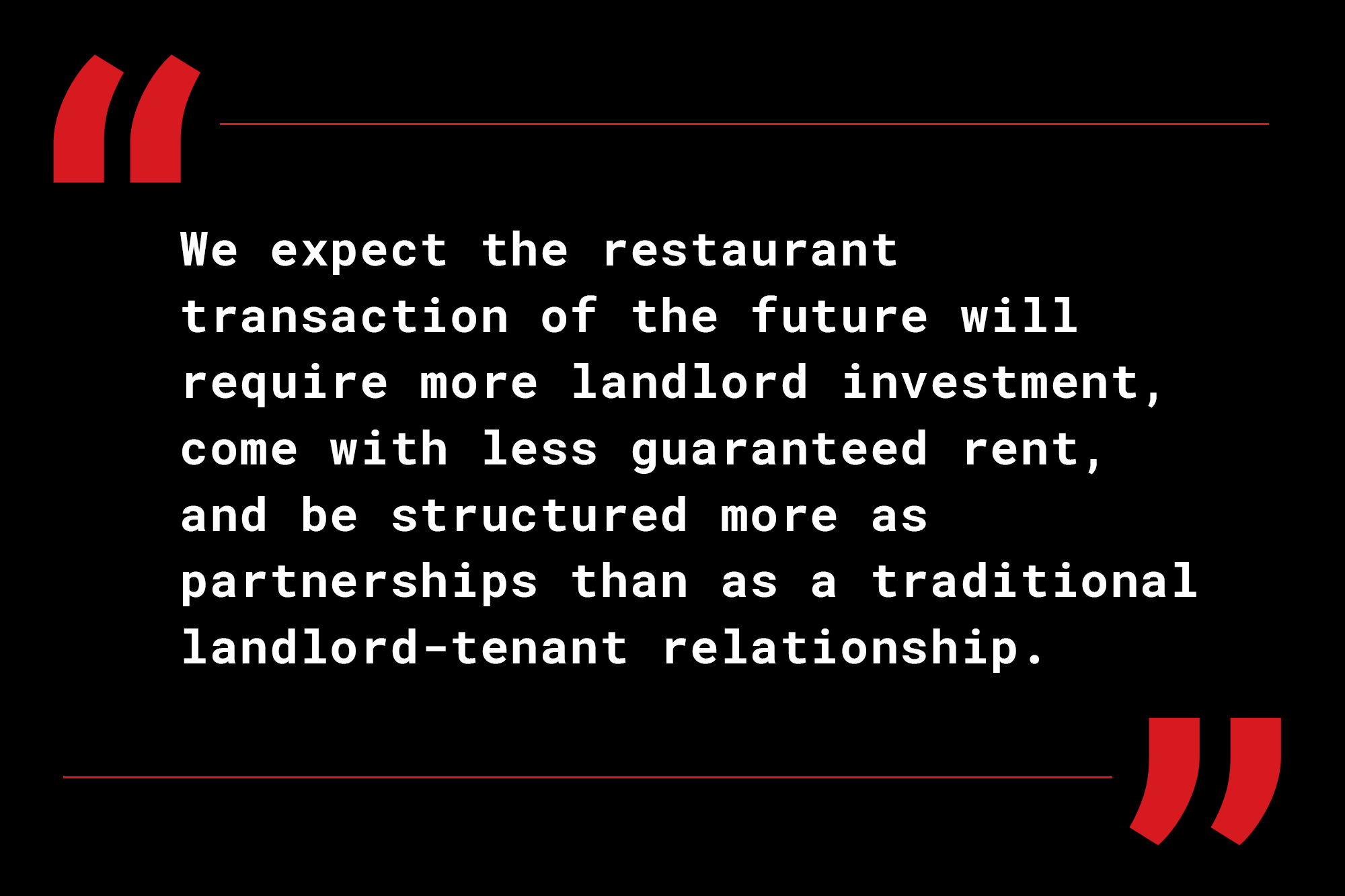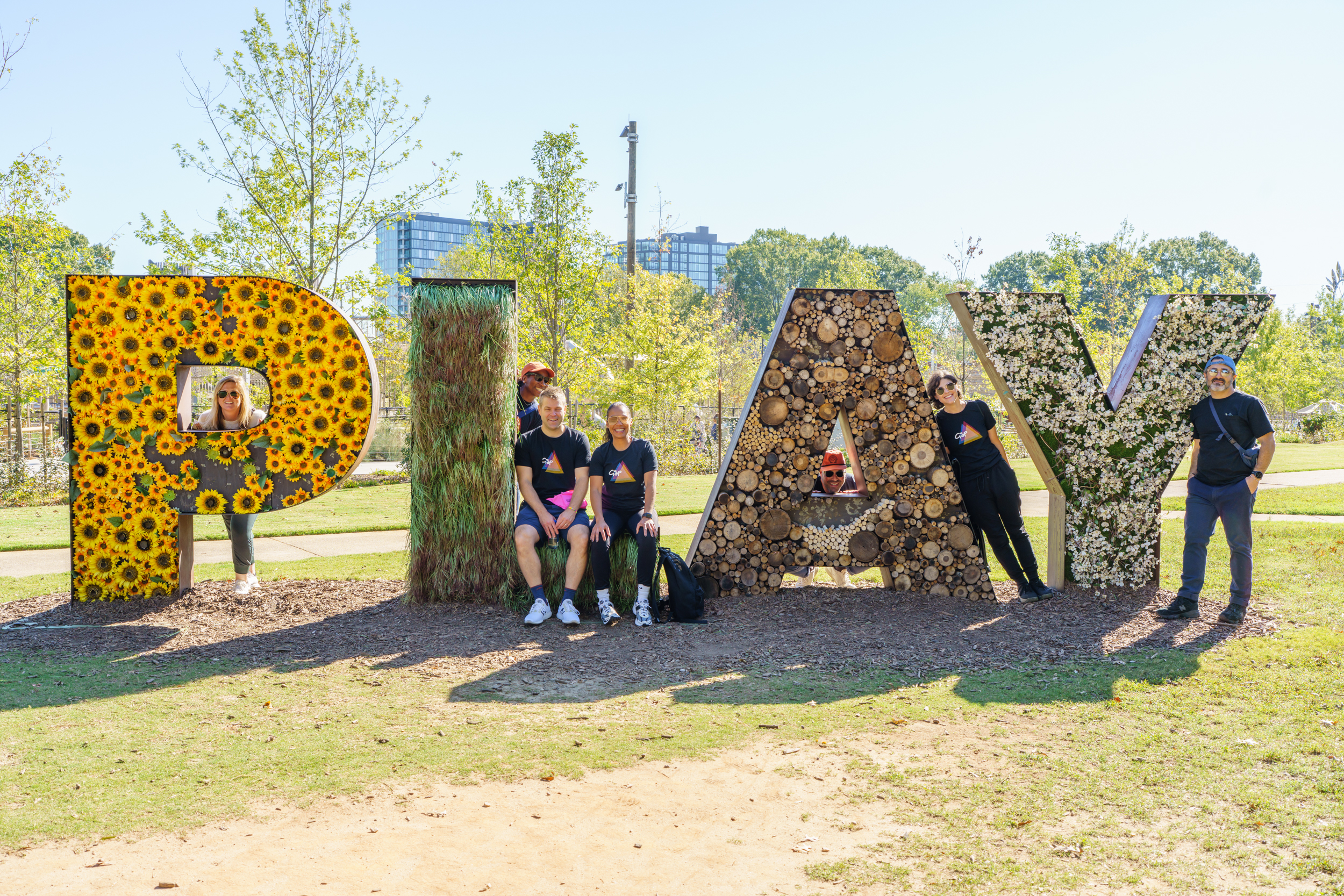Update #7: Restaurants
Dear Clients & Colleagues,
Restaurants. The reason so many of you have hired us in the past. You want them in your projects. You want that great local coffee shop, the n’hood bistro, the chef with all those Instagram followers, the slick outdoor patio at your building’s front door, the lovely private dining room for all those lab and life science workers upstairs, the office lobby that feels like a hotel lobby, the bakery that cranks 12+ hours every. single. day.
Restaurants. No category other than live entertainment has been hit as hard by the COVID-19 fallout. And no category in the retail sector employs as many people nor is as important to the culture of our urban neighborhoods.
Restaurants. We love them. We need them. But how do we help them right now? How do they rebound? How do we do deals with great local restaurateurs in the future?
For this 7th weekly update I’m going to scratch the surface of the last question above: how do we rethink restaurant deals? While it is not the most important question of the above at the moment, it is the one many of you have been asking Graffito a lot about of late. And, as you can image, we have some thoughts.
Restaurant Realities From The Pre-virus World
Let me start by stating something not all of you know: 2019 was not a good year for many restaurants in places like Boston; places where the only thing accelerating faster than the number of new food & beverage outposts was the cost of housing and the cost of construction.
In 2019 restaurants across the country — especially the chef-driven, locally owned, neighborhood joints that we all romanticize about — were squeezed from all sides. Competition in food & beverage has been getting more and more intense: quick service establishments are no longer just for lunch breaks and cheap dinners; and our respective dining landscapes now include food halls, tap rooms, casinos, grocery stores, and movie theaters, all of which are eager to serve us meals. Even more challenging than all the new competition are the rising labor costs, costs of goods, rent, and construction pricing.
In sum, well before any of us had heard of the novel coronavirus, many of our local restaurants were in peril. No individual has written as beautifully and honestly about this topic of late as Garbielle Hamilton (Prune, NYC) did last week in The New York Times Magazine. If you haven’t read it yet, you must. And if you don’t get a little teary-eyed then you probably shouldn’t be in the business of retail real estate. Or maybe you should, because all of us here at Graffito wish it wasn’t so heartbreaking sometimes: My Restaurant Was My Life for 20 Years. Does the World Need It Anymore?
In sum, 2019 was already tough; 2020 is going to be way worse; what now?
Restaurants As Social & Cultural Infrastructure
All of our urban mixed-use projects need certain infrastructure: streets, green space, common areas, bike and car parking, loading, sidewalks, etc. (collectively “ordinary infrastructure”). All of this ordinary infrastructure costs a lot of money to build, and most often our expectation is not for an immediate or tangible economic return from these investments. Is now the time to look at restaurants just like ordinary infrastructure? That is to say, are restaurants so crucial to the success of our projects and overall neighborhood-scale value creation that generating an immediate and direct return is not always necessary?
The answer for many of our clients is already a “yes” – it has been for years – but perhaps moving forward the only answer for all of us is a “yes.”
Putting restaurants in the same bucket as ordinary infrastructure and things like public art, open space programming, lobby furniture, and private parks (collectively “social and cultural infrastructure”) isn’t all that crazy. The key difference though with restaurants is that, when done right, they can still generate sizable returns for landowners.
We expect the restaurant transaction of the future will require more landlord investment, come with less guaranteed rent, and be structured more as partnerships than as a traditional landlord-tenant relationship. And just as with street trees and lobbies, some landlords will invest millions into these pieces of infrastructure, while others simply wont have the means or the desire to do so. But regardless, something has to give, because pre-virus things were ugly. And post-virus things are worse; far worse.
Despite all the heartbreak in the restaurant industry today, there are more than a few chefs I have spoken with of late that view the reset coming as needed. Not the depth and pain of the reset being forced upon us by COVID-19, but some sort of a reshuffling that gives restaurants more breathing room in their leases and forces the real estate community at-large to appreciate anew just how damn hard it is to make a local one-off restaurant work. And with more breathing room perhaps restaurants of the future will be able to pay staff enough to live in a city like Boston, while still having enough cash reserves to make the sort of quick pivots and investments into new technology, equipment, and design that enable them to better survive all the uncertainly ahead, and maybe even another economic crisis or two.
Thanks for reading.
Please keep in touch.
More from us this week on the blog and more from me next week in update #8,
/Jesse




